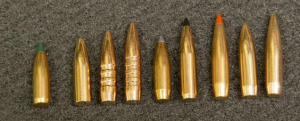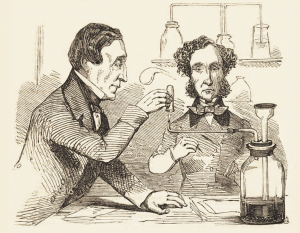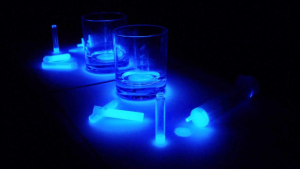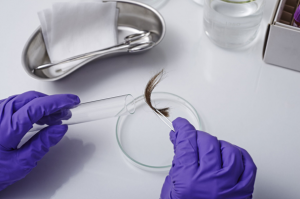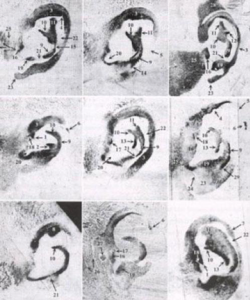CJC-F, CJC-F Announcements, CJC-F Tidbits
Over the years, as technology infiltrates almost every aspect of our lives, forensic technologies have also advanced to help solve crimes as though they were from a science fiction thriller. In fact, there are a whole myriad of incredibly cool and interesting forensic technologies that you probably never knew existed.
1. Can genetics pinpoint what a person looks like?
The most powerful tool in forensic science is the idea of DNA testing, because it gives you the “who”. With the identity of the person, the law enforcement can be well aided in their investigations. The evolution of DNA profiling typically starts by collecting DNA samples from crime scenes, analysing it and comparing it to a known suspect’s DNA profile. The O.J Simpson case in the United States is a perfect example. A bloodstain near the bodies of the victims at the murder scene was compared against O.J Simpson’s DNA to see if there was a match.
In the past, huge amounts of samples: big bloodstain, big semen stains were required for DNA profiling. However, sensitivity from the technology now allows us to pick up DNA from just a few cells from a minute amount of sample. This means that DNA profiling can be done from just a touch on a surface and that has opened up a whole new paradigm of DNA profiling in forensic science. It no longer has to be blood anymore. It can just be skin cells or just a little bit of saliva which now have the potential to be developed into a full DNA profile to give reliable evidence that it belongs to a specific person.
The value of DNA profiling is best appreciated when the generated DNA profile can be matched to a known individual. However, when such a known individual, for example, a suspect or a victim is not available, the profile will be reported as being from an unknown person. In such situations, it will not be of much help for law enforcement and thus they can now request something known as DNA phenotyping.
DNA phenotyping is essentially an exciting forensic genetics of tomorrow. It can provide us with DNA intelligence ranging from the prediction of a person’s age, ancestry to even appearance with just a blood sample. Right now, these three components are predictive in nature but not unique to a particular person. We are only able to look at black, brown, red or blonde hair colour; blue, brown or intermediate eye colour, which in a Singapore or Asian context is not all that relevant because everybody has black hair and brown eyes. The ancestry analysis is first conducted at the continental level. A higher resolution analysis of the ancestry to understand the population of origin of the blood sample. This could indeed serve as forensic intelligence to help law enforcement narrow down the possible list of suspects or victims. Perhaps in the near future, 3D facial reconstruction can be developed and implemented.
Zooming into other parts of the world, in April 2017, using phenotypic single nucleotide polymorphism SNPs, a woman’s headless body found in Dubai desert could be identified to a Filipino woman who was among the runaway and missing maid servants in the United Arab Emirates. This essentially showed the power of DNA phenotyping to aid in the identification of suspect/victim.
While DNA phenotyping has not yet been used for active casework in Singapore, it has potential for future developments and refinements based on the Singapore population genetics. Perhaps, DNA phenotyping could be used as evidence in court, when this technology becomes one with high precision and accuracy. One innovation we can look forward to in Singapore would be the DNA Phenotyping Lab-on-Chip project which is still under development by the Home Team Science and Technology Agency (HTX). This project serves to amplify DNA and identify unique forensic markers like gender and blood type, allowing quick and key information about the contributor to be obtained within a short span of time period.
Genealogy research, ancestry research has always been up-and-coming in this part of the world. However, at the same time, it has opened up a whole new set of ethical and social questions that needs to be addressed. People put their DNA profiles into genealogical databases, with the idea for them to find their long-lost relatives. No one quite anticipated that such genetic information is now going to be used without their knowledge, without their consent. If there are no right regulations in place, allowing widespread access to private and sensitive information, then that information could potentially be used for harm.
People have always thought of DNA as a magical tool, and this should be attributed towards TV series. Sometimes a composite face just pops up when they put in a strand of hair. The technology is not there yet, but that does not mean we will not get there, but it is just not there for the next couple of years.
2. Can laser 3D-scanning capture every aspect of a crime scene?
Crime scene specialists in the Criminal Investigation Division in Singapore Police Force (SPF) provide professional forensic support in investigations. They have to constantly bear in mind that there is a need to maximise evidence collection. One of the most important factors that they have to be aware of is that the perpetrator is still at large so they need to expedite the information that can be gathered at the crime scene to the Investigation Officer (IO) as quickly as possible. For example, if the IO asks for the measurements of any weapons found, the crime scene specialists need to provide the required information as quickly as possible.
A traditional method of taking manual measurements will take up lots of time which may impede the time taken in an investigation. However, with the handheld 3D scanner which consists of a tablet with the 3D sensor, a 360-degree view of the crime scene can be captured. In the 3D scanning world, we can have higher resolutions, and at the same time, experience 3D view of the entire scene of what is actually happening. With one photograph, we cannot tell the story of the whole crime scene. But, with a 3D scan and a 360-degree view, different perspectives of the crime scene can be obtained.
While the SPF is still evaluating how best to use the handheld 3D scanner, the concept has proven useful for its Fatal Accident Investigation Team (FAIT). FAIT investigates cases where death occurs in an accident. The forensics division also assists FAIT in the investigation. With the laser 3D scanning technology, investigators can capture and analyse all these four elements concurrently – human, vehicle, road and environment causing the accident to happen, in less than 30 minutes. The 3D scanner can also give very accurate measurements of lane markings, the tyre marks and the brake marks. Speed and blind spots can be analysed as well.
One notable incident in Singapore would be the road accident at Choa Chu Kang Ave 5 in March 2018, involving a 6 years old boy and a bus. The 3D laser model together with video evidence from the bus CCTV footage allow reverse photogrammetry to be done, which allows the position of the objects/items, the camera, the bus, relative to the rest of the objects in the scene. This allows a range of scenarios to be painted. This case was then classified as “unfortunate traffic misadventure”.
The benefit of 3D laser scanner and 3D modelling, in general, is that it allows us to illustrate our findings in a more visual manner, in three dimensions. The scanner will highly possibly become a very integral part of future forensic analysis which can serve as important and useful admissible evidence in Court.
3. Can misuse of 3D printed guns be controlled?
3D printing in general is a technology which is commercially-used nowadays for printing any products in an easy, more reliable and fast way. You can basically get any products at home printed at your own desire. 3D printing could also be used in negative ways like the creation of weapons. The world’s first functional 3D printed gun was in fact designed in 2013. There have been identified cases of 3D printed guns, where a person has used it to kill someone.
Using a 3D-printed air pistol in Singapore is illegal and can be punishable by death. In conventional weapons, they have a known manufacturer, through a serial number that is provided. 3D printed guns are usually from unknown sources, so one will not know how it is manufactured, who is the person who handled the model, who is the person who has made it, and how it has been brought into the country – whether it has been shipped from abroad or it has been manufactured in-house. It is very difficult to track this because everyone can have a 3D printer at home and download all the 3D files for the gun to print it out.
Digital forensics can trace a 3D printed object to its source printer. Every 3D printer has its own unique fingerprint, as a result of minor defects from the manufacturing process. A 3D printer gun can potentially be traced back to its printer by matching its textures to the printer.
4. Can real-time facial recognition fight against the crime of human trafficking?
Forensic science is not just all about murder, murder and murder. It can be any crime that uses science in the service of law. Human trafficking for prostitution and organ trade moves around rather actively in Bengaluru. In Bengaluru, railways are vulnerable in terms of human trafficking as it is open and porous from all sides. Railways is a platform for travelling throughout the country – it is fast, it is cheap, and it connects the entire length and breadth of the nation. It is being used by 23 million people in a day.
The railway police started the anti-human trafficking operation “Nanhe Farishte (Little Angels)” on the railways to rescue trafficked girls, boys and women. The railway police also formed dedicated child rescue teams, trained them with international and national agencies both in terms of technology and also augmenting their skills – how to identify the victims of trafficking, as well as identifying their traffickers who will be moving around the platforms in the garb of ordinary passengers.
For a country like India, which is overpopulated, and law enforcement are understaffed,, technology becomes a boon. Face recognition as such can change the paradigm of human trafficking menace. FaceTagr, a phone technology platform involving the partnership of face recognition software with the railway police can help intervene human trafficking. Photos of the suspected people who are being trafficked will be compared against their databases of formal police reports of missing children/person. By using FaceTagr, the railway police can immediately tag and confirm if it matches the child in the missing report. They can then contact the relevant police station for further assistance.
There is a need to leverage technology because it is practically impossible to deploy manpower everywhere, but technology can be a force multiplier. Identification of traffickers through CCTV based face recognition system plays a major role in stopping human trafficking over railways.
In early 2019, the railway police force sanctioned funds to install 50 facial recognition-enabled cameras at the Bengaluru city railway station. This will be linked to India’s national criminal database to identify serial offenders. If the suspected trafficker has been there on railway premises, the police will get a pop-up immediately. Moreover, in September 2019, the Indian Government also initiated one of the world’s largest Automated Facial Recognition System (AFRS) to identify criminals, missing children and dead bodies across the country.
Nonetheless, face recognition in India as well as across the world is going through a lot of pros and cons. There are debates going on about privacy, just as the genetic databases as mentioned earlier in this article. While police use of facial recognition is accepted by British Court, San Francisco banned facial recognition technology. Ultimately, the biggest challenge in facial recognition systems is humans, not technology. If we do not put the right regulations in place to give only certain people access, then that information could potentially be used by anyone to harm someone else.
In conclusion, science and technology in all aspects is putting on a new face on crime solving, giving us the ability to solve and prevent crimes from happening all around the world as well as allowing the process of law enforcement to be way more efficient than before.
*The views and opinions expressed in this article do not constitute legal advice and solely belong to the author and do not reflect the opinions and beliefs of the NUS Criminal Justice Club or its affiliates.
Authors’ Biography
Sheryl Seet is a final year undergraduate, majoring in Life Sciences with a Minor in Forensic Science. An aspiring forensic scientist, Sheryl hopes to contribute her wealth of knowledge in forensic science and play a vital role in the criminal justice system.


